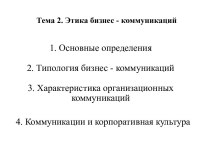- Главная
- Разное
- Бизнес и предпринимательство
- Образование
- Развлечения
- Государство
- Спорт
- Графика
- Культурология
- Еда и кулинария
- Лингвистика
- Религиоведение
- Черчение
- Физкультура
- ИЗО
- Психология
- Социология
- Английский язык
- Астрономия
- Алгебра
- Биология
- География
- Геометрия
- Детские презентации
- Информатика
- История
- Литература
- Маркетинг
- Математика
- Медицина
- Менеджмент
- Музыка
- МХК
- Немецкий язык
- ОБЖ
- Обществознание
- Окружающий мир
- Педагогика
- Русский язык
- Технология
- Физика
- Философия
- Химия
- Шаблоны, картинки для презентаций
- Экология
- Экономика
- Юриспруденция
Что такое findslide.org?
FindSlide.org - это сайт презентаций, докладов, шаблонов в формате PowerPoint.
Обратная связь
Email: Нажмите что бы посмотреть
Презентация на тему Business Communications (lecture 21 and 22) Negotiation Skills
Содержание
- 2. NegotiatingWhat kind of things do you negotiate
- 3. Negotiating Role PlayIf you want something, sometimes
- 4. Role PlayFind a partner Each pair will
- 5. DefinitionNegotiation is the process by which people
- 6. Types of Negotiation: Distributive NegotiationIn distributive
- 7. Types of Negotiation: Distributive NegotiationHow much
- 8. Types of Negotiation: Integrative NegotiationIntegrative negotiations
- 9. Types of Negotiation: Integrative NegotiationWho will
- 10. Distributive NegotiationsDistributive negotiations are about compromise. However,
- 11. Negotiation Types: Comparison
- 12. 5 Negotiating StylesWe all tend to have
- 13. Assess Your StyleWhat do you see as the advantages and disadvantages of your preferred negotiating style?
- 14. Multi-phase NegotiationsNegotiations are seldom straightforward – two
- 15. Multi-party NegotiationsOften negotiations involve several parties at
- 16. 4 Key Principles of NegotiationNegotiations require a
- 17. BATNABest Alternative To A Negotiated AgreementWhat is
- 18. Walk-Away PointWhat is the minimum acceptable outcome
- 19. AOPAArea Of Possible Agreement.This is the range
- 20. Value CreationValue creation through trades is the
- 21. Скачать презентацию
- 22. Похожие презентации
NegotiatingWhat kind of things do you negotiate for?What negotiating tactics do you use?What do you need to be a successful negotiator?

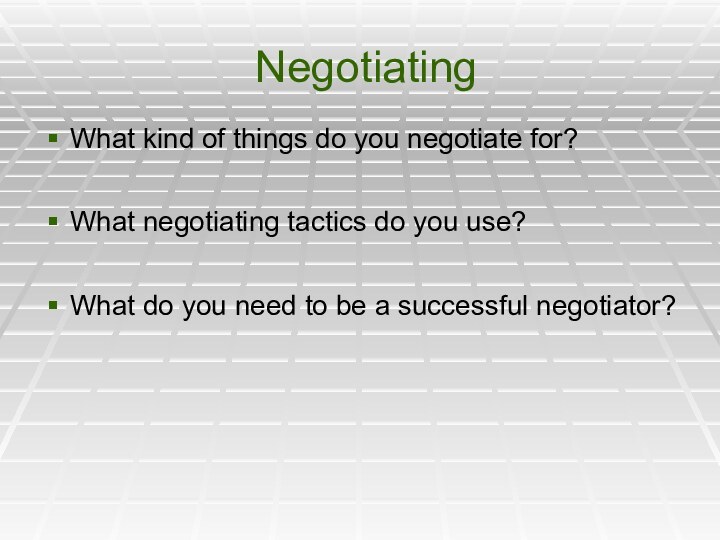
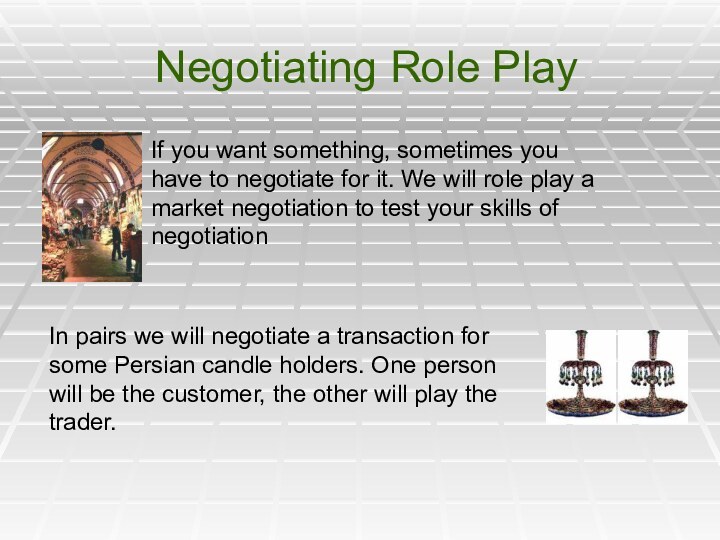
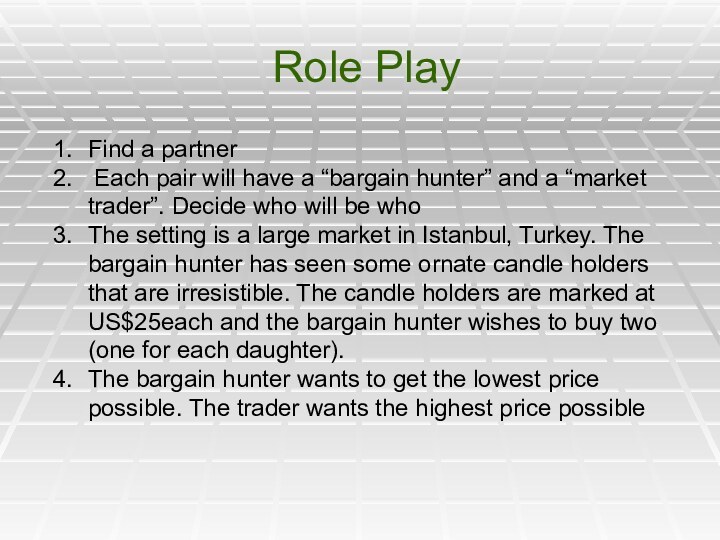

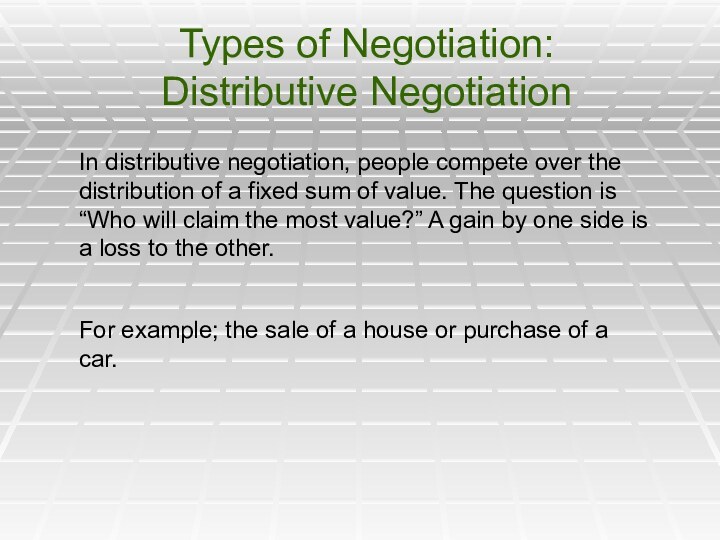
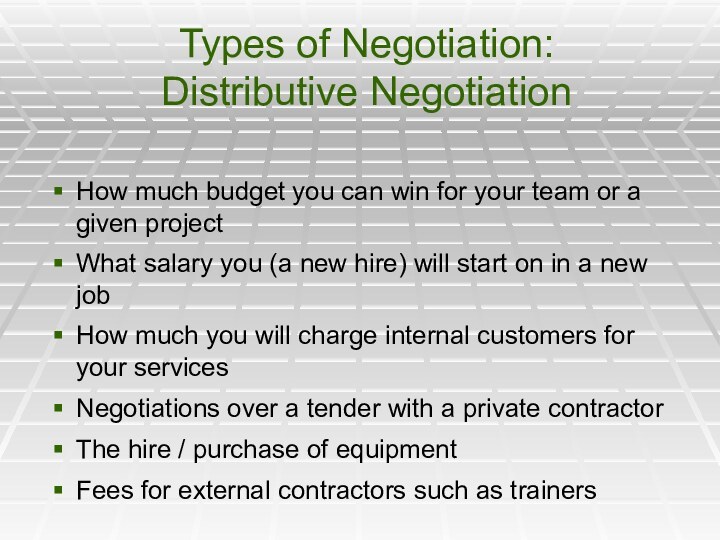
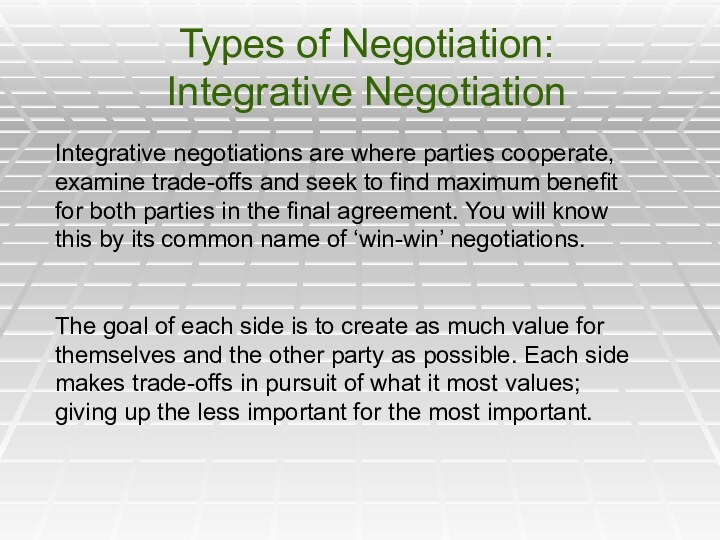
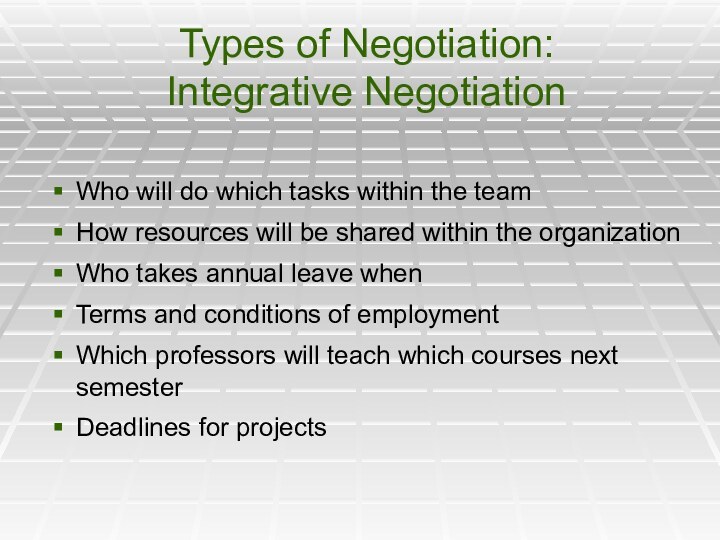
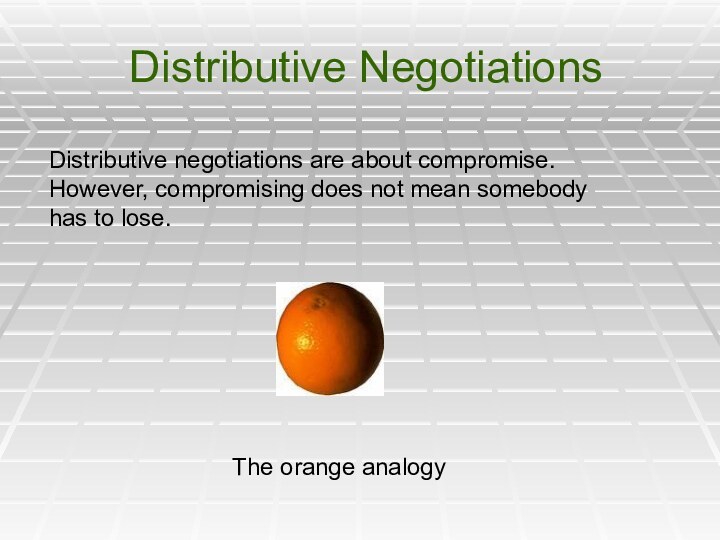
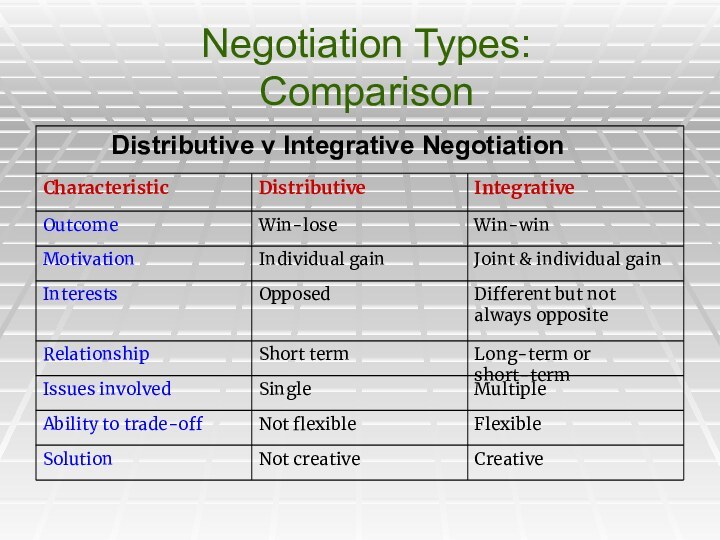
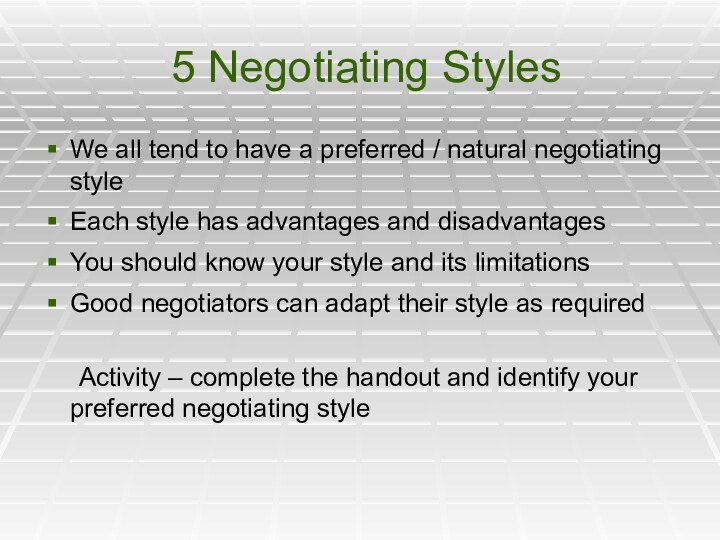

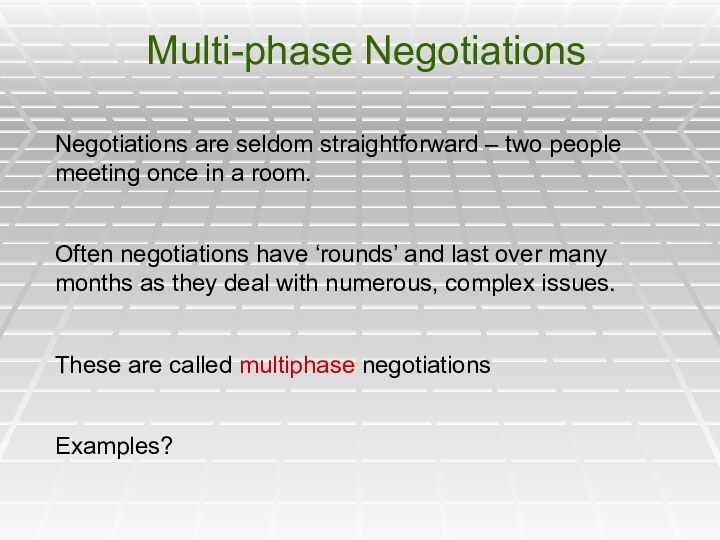
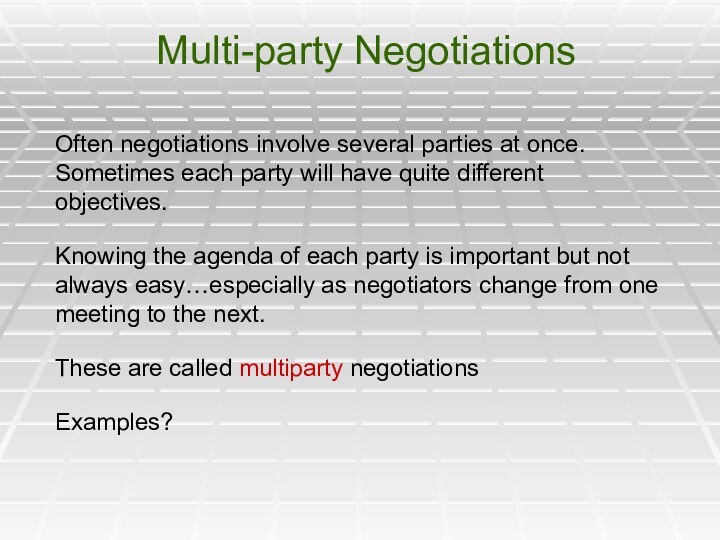

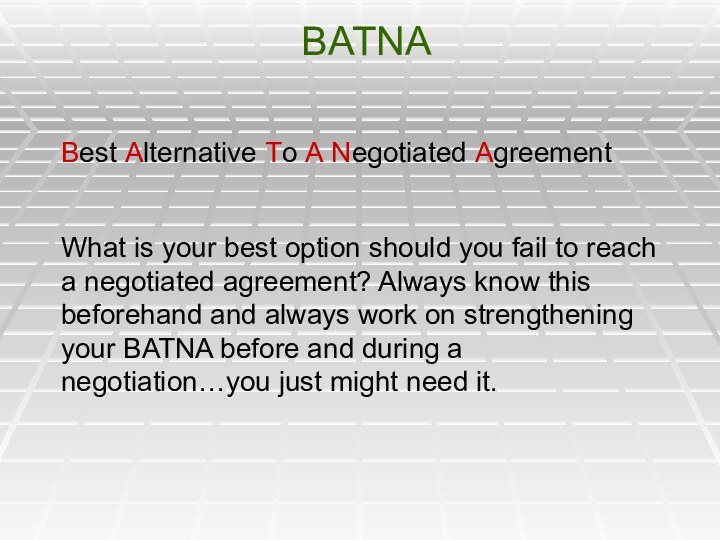
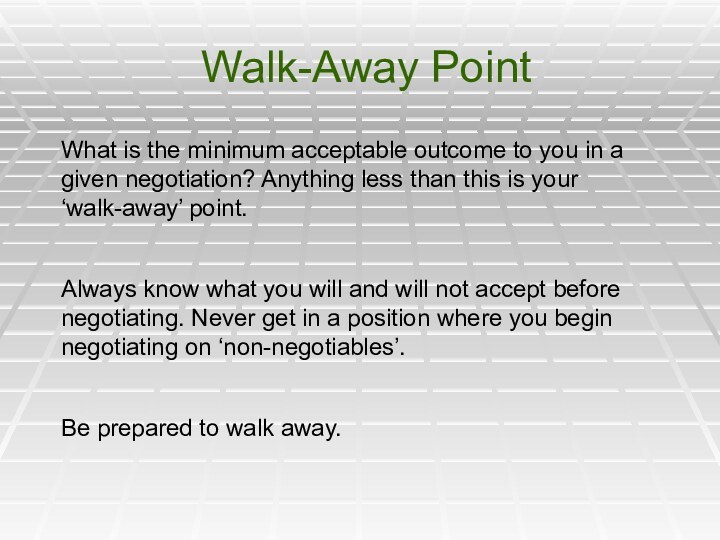
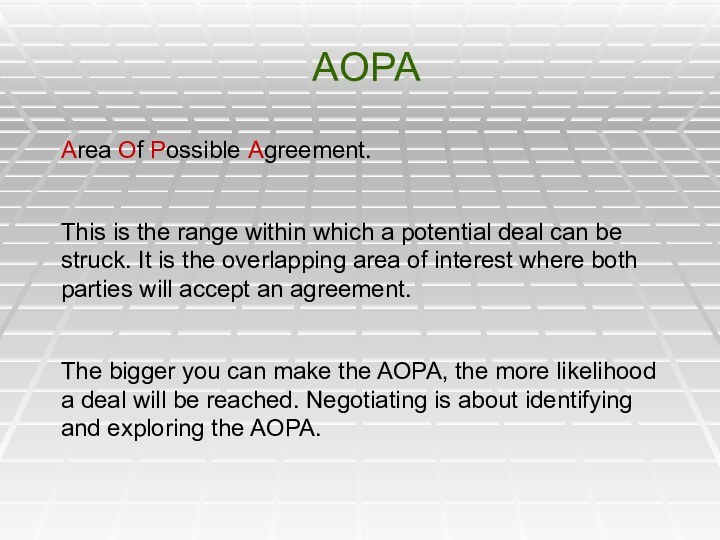

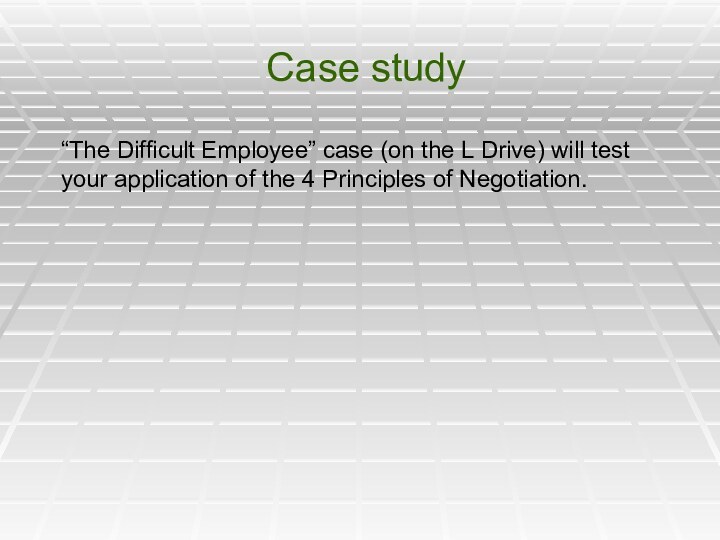
Слайд 2
Negotiating
What kind of things do you negotiate for?
What
negotiating tactics do you use?
be a successful negotiator?
Слайд 3
Negotiating Role Play
If you want something, sometimes you
have to negotiate for it. We will role play
a market negotiation to test your skills of negotiationIn pairs we will negotiate a transaction for some Persian candle holders. One person will be the customer, the other will play the trader.
Слайд 4
Role Play
Find a partner
Each pair will have
a “bargain hunter” and a “market trader”. Decide who
will be whoThe setting is a large market in Istanbul, Turkey. The bargain hunter has seen some ornate candle holders that are irresistible. The candle holders are marked at US$25each and the bargain hunter wishes to buy two (one for each daughter).
The bargain hunter wants to get the lowest price possible. The trader wants the highest price possible
Слайд 5
Definition
Negotiation is the process by which people deal
with their differences. To negotiate is to seek mutual
agreement through dialogue.
Слайд 6
Types of Negotiation:
Distributive Negotiation
In distributive negotiation, people
compete over the distribution of a fixed sum of
value. The question is “Who will claim the most value?” A gain by one side is a loss to the other.For example; the sale of a house or purchase of a car.
Слайд 7
Types of Negotiation:
Distributive Negotiation
How much budget you
can win for your team or a given project
What
salary you (a new hire) will start on in a new jobHow much you will charge internal customers for your services
Negotiations over a tender with a private contractor
The hire / purchase of equipment
Fees for external contractors such as trainers
Слайд 8
Types of Negotiation:
Integrative Negotiation
Integrative negotiations are where
parties cooperate, examine trade-offs and seek to find maximum
benefit for both parties in the final agreement. You will know this by its common name of ‘win-win’ negotiations.The goal of each side is to create as much value for themselves and the other party as possible. Each side makes trade-offs in pursuit of what it most values; giving up the less important for the most important.
Слайд 9
Types of Negotiation:
Integrative Negotiation
Who will do which
tasks within the team
How resources will be shared within
the organizationWho takes annual leave when
Terms and conditions of employment
Which professors will teach which courses next semester
Deadlines for projects
Слайд 10
Distributive Negotiations
Distributive negotiations are about compromise. However, compromising
does not mean somebody has to lose.
The orange
analogy
Слайд 12
5 Negotiating Styles
We all tend to have a
preferred / natural negotiating style
Each style has advantages and
disadvantagesYou should know your style and its limitations
Good negotiators can adapt their style as required
Activity – complete the handout and identify your preferred negotiating style
Слайд 13
Assess Your Style
What do you see as the
advantages and disadvantages of your preferred negotiating style?
Слайд 14
Multi-phase Negotiations
Negotiations are seldom straightforward – two people
meeting once in a room.
Often negotiations have ‘rounds’ and
last over many months as they deal with numerous, complex issues.These are called multiphase negotiations
Examples?
Слайд 15
Multi-party Negotiations
Often negotiations involve several parties at once.
Sometimes each party will have quite different objectives.
Knowing the
agenda of each party is important but not always easy…especially as negotiators change from one meeting to the next.These are called multiparty negotiations
Examples?
Слайд 16
4 Key Principles of Negotiation
Negotiations require a framework
to guide them. They require some planning and preparation
so that we get the best result from a negotiationThere are 4 key principles that give a negotiation its direction…
BATNA
Walk-away Point
AOPA
Value Creation
Слайд 17
BATNA
Best Alternative To A Negotiated Agreement
What is your
best option should you fail to reach a negotiated
agreement? Always know this beforehand and always work on strengthening your BATNA before and during a negotiation…you just might need it.
Слайд 18
Walk-Away Point
What is the minimum acceptable outcome to
you in a given negotiation? Anything less than this
is your ‘walk-away’ point.Always know what you will and will not accept before negotiating. Never get in a position where you begin negotiating on ‘non-negotiables’.
Be prepared to walk away.
Слайд 19
AOPA
Area Of Possible Agreement.
This is the range within
which a potential deal can be struck. It is
the overlapping area of interest where both parties will accept an agreement.The bigger you can make the AOPA, the more likelihood a deal will be reached. Negotiating is about identifying and exploring the AOPA.
Слайд 20
Value Creation
Value creation through trades is the process
of trading off things that have little value to
us but high value to the other party.You need to know what you have to trade and what the other party really wants and values. You also need to know what they can trade that you want.




















